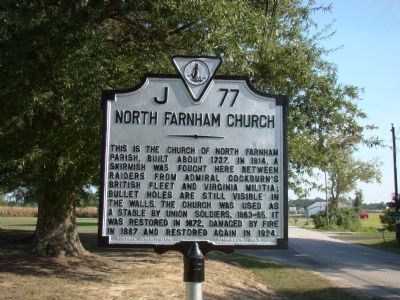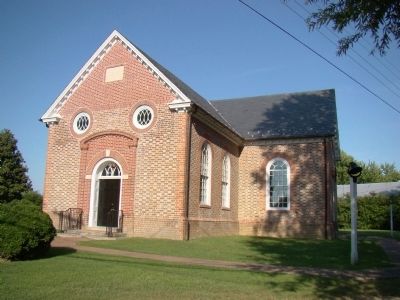
Photo courtesy of the Historical Marker Database
In Farnham, just off of Cedar Grove road, there stands a little church with a big history. This colonial era Episcopal church building was built in 1737 and is still in use today.
In the years after the American Revolution, it is said that the building’s interior fell into disrepair and by the time the War of 1812 began the building was being used as a stable for horses.

The War of 1812 played an important role in shaping Northern Neck history. During the war, Virginia acted as an especially important battleground due to its close proximity to the capital. The Chesapeake Bay became the number one target as the British attempted to disrupt American trade and commerce. Cities and towns along the Potomac, James and Rappahannock Rivers were devastated by British raids and occupancy.
British Troops swept through the counties of the Northern Neck, plundering and burning as the went and eventually found themselves at the church in Farnham where they were met with opposition. Following this skirmish the British retreated to their ships and left the area entirely. It is said that bullet holes from this exchange can still be seen in the church walls.
The church was again utilized as a stable during the Civil War by Union Soldiers.
In 1887 a fire broke out that destroyed the interior of the building leaving nothing but the basic exterior structure. The building then underwent a full restoration in 1921 and has been well maintained since then.
A historical marker has been placed near the little church commemorating the events of its past. The marker is located at the intersection of North Farnham Church Road and Cedar Grove Road in Richmond County, just off of Route 3.
This marker reads:
This is the church of North Farnham Parish, built about 1737. In 1814, a skirmish was fought here between the raiders from Admiral Cockburn’s British fleet and Virginia militia; bullet holes are still visible in the walls. The church was used as a stable by Union soldiers, 1863–65. It was restored in 1872, damaged by fire in 1887 and restored again in 1924.
Information courtesy of the Episcopal Church at Farnham
http://www.farnhamwithstjohns.org/





